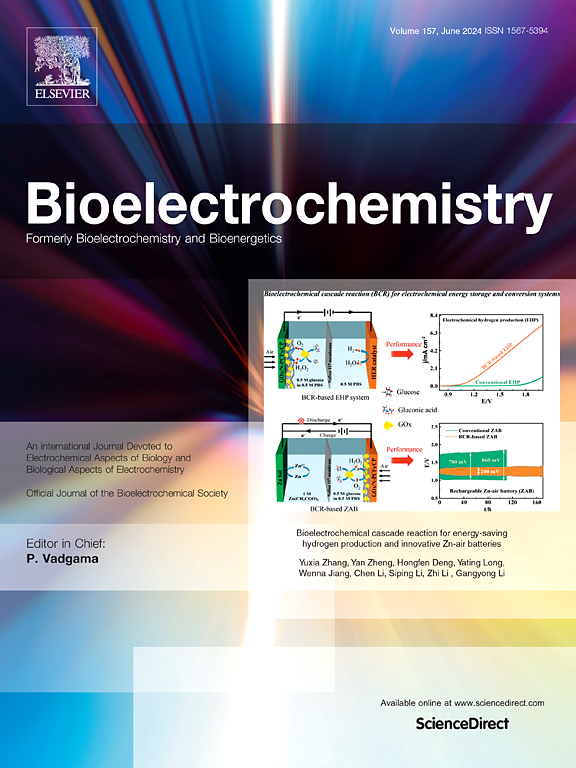The zona incerta regulates burying behavior and normalizes anxiety-like behavior in inescapable stressful male mice by object cue
IF 3.6
2区 医学
Q1 NEUROSCIENCES
引用次数: 0
Abstract
Inescapable stressful events often precipitate long-term alterations in emotion-related behaviors and poor sleep quality, with anxiety being a prevalent associated disorder. The defensive burying behavior of rodents is a response to imminent threats that becomes markedly pronounced in response to anxiety. However, the neural foundations of defensive burying behavior and etiology of anxiety remain largely unknown. In this study, we established a model employing object binding to elicit increased burying behavior in mice, thereby enhancing fear resolution and subsequently reducing anxious behaviors. Notably, the mice that associated shock with an object exhibited less object exploration and the zona incerta (ZI) neurons showed higher calcium activity during object exploration as compared to the Shock only mice. Although the calcium activity in ZI neurons of the Object mice was identical to the Shock only mice, the Object mice exhibited more burying behavior. Furthermore, the time spent in the center of the open-field test was directly proportional to the duration of burying behavior. Chemogenetic activation of ZI neurons extended the burying time and concomitantly ameliorated anxiety-like behavior. Importantly, chemogenetic enhancement of projection from ZI neurons to the ventral periaqueductal gray (vPAG), a brain region that plays a critical role in autonomic function, normalizes anxious behavior without influencing burying behavior. Collectively, these findings systematically reveal the functions and underlying mechanisms of the ZI-vPAG circuit in controlling behaviors akin to anxiety, offering significant insights into ZI's role in the pathophysiology of anxiety disorders.
无虫带通过物体提示调节不可逃避的应激雄性小鼠的埋藏行为和使焦虑样行为正常化
不可避免的压力事件往往会导致情绪相关行为的长期改变和睡眠质量下降,焦虑是一种普遍的相关障碍。啮齿动物的防御性掩埋行为是对迫在眉睫的威胁的一种反应,在焦虑的反应中变得明显。然而,防御性埋藏行为的神经基础和焦虑的病因学在很大程度上仍然未知。在这项研究中,我们建立了一个模型,利用物体绑定来引发小鼠增加的埋藏行为,从而增强恐惧解决,从而减少焦虑行为。值得注意的是,与只有电击的小鼠相比,将电击与物体联系起来的小鼠表现出较少的物体探索,并且在物体探索过程中,无动带(ZI)神经元显示出更高的钙活性。虽然Object小鼠的ZI神经元钙活性与电击小鼠相同,但Object小鼠表现出更多的埋藏行为。此外,在空地试验中心停留的时间与掩埋行为的持续时间成正比。ZI神经元的化学发生激活延长了掩埋时间,并随之改善了焦虑样行为。重要的是,从ZI神经元到腹侧导水管周围灰质(vPAG)(一个在自主神经功能中起关键作用的大脑区域)的投射的化学发生增强使焦虑行为正常化,而不影响掩埋行为。总的来说,这些发现系统地揭示了ZI- vpag回路在控制类似焦虑的行为中的功能和潜在机制,为ZI在焦虑障碍的病理生理学中的作用提供了重要的见解。
本文章由计算机程序翻译,如有差异,请以英文原文为准。
求助全文
约1分钟内获得全文
求助全文
来源期刊

Neurobiology of Stress
Biochemistry, Genetics and Molecular Biology-Biochemistry
CiteScore
9.40
自引率
4.00%
发文量
74
审稿时长
48 days
期刊介绍:
Neurobiology of Stress is a multidisciplinary journal for the publication of original research and review articles on basic, translational and clinical research into stress and related disorders. It will focus on the impact of stress on the brain from cellular to behavioral functions and stress-related neuropsychiatric disorders (such as depression, trauma and anxiety). The translation of basic research findings into real-world applications will be a key aim of the journal.
Basic, translational and clinical research on the following topics as they relate to stress will be covered:
Molecular substrates and cell signaling,
Genetics and epigenetics,
Stress circuitry,
Structural and physiological plasticity,
Developmental Aspects,
Laboratory models of stress,
Neuroinflammation and pathology,
Memory and Cognition,
Motivational Processes,
Fear and Anxiety,
Stress-related neuropsychiatric disorders (including depression, PTSD, substance abuse),
Neuropsychopharmacology.
 求助内容:
求助内容: 应助结果提醒方式:
应助结果提醒方式:


